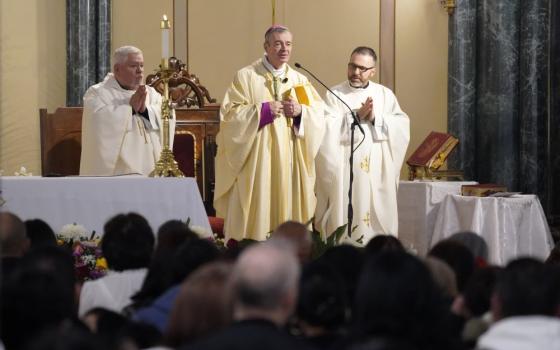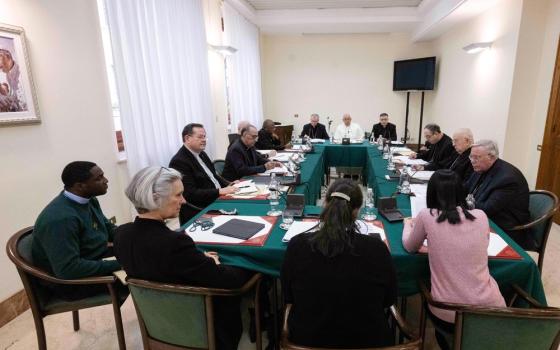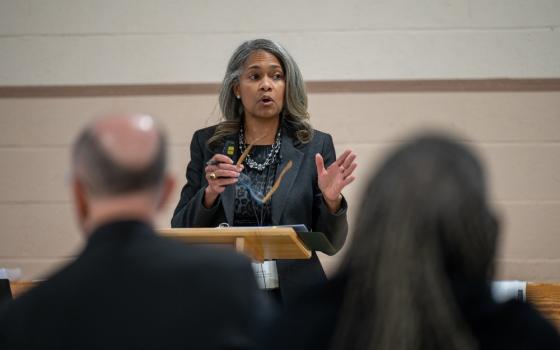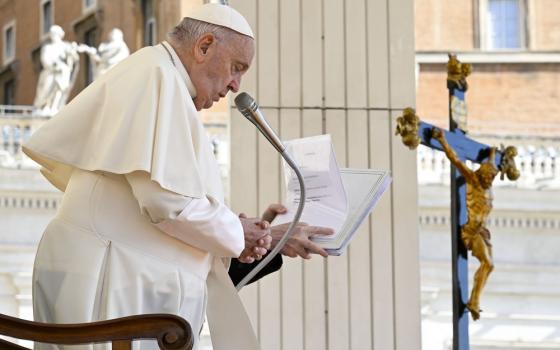
Mission Management
The confluence of a massive motherhouse, declining vocations and an aging population of women religious has caused many religious orders to convert their motherhouses into assisted living facilities and retirement homes.
In 1965, there were 173,865 women religious in the United States, according to the Center for Applied Research in the Apostolate at Georgetown University. In 2000, there were just under 80,000 women religious in the United States. In 1985, the average age was 63; by 1999, it was 69.
But one group of women religious, instead of going the route of providing a home for the aging, went in the opposite direction with its motherhouse.
The Sisters of Christian Charity in Mendham, N.J., own a 150,000-plus-square-foot motherhouse sitting on 112 acres of prime real estate. It is an idyllic setting, private, quiet and green. For decades, this facility was the place for the Sisters of Christian Charity to educate members of their congregation in theology and liberal arts. In its heyday, the motherhouse could accommodate some 200 residents.
In the early 1990s, the community began to see the writing on the wall: After 40 years, they could no longer educate the fewer sisters they had in their sprawling campus. At the same time, it was clear that many of the older sisters were still able to teach college level courses, but perhaps not a full teaching load, as when they were much younger.
By 1996, the Sisters of Christian Charity opened up Assumption College for Sisters to women religious of other orders, using the motherhouse for classrooms and as a dormitory. The college provides a two-year academic program in theology and liberal arts. Tuition is $150 per credit or $8,000 per year. An annual dinner gala provides funds to sponsor 25 sisters from developing countries.
Today there are 42 perpetually professed sisters from 10 different countries attending the college and seeking an associate’s degree. Most sisters come from Tanzania, Vietnam, Kenya and South Africa. A group of nearby U.S. Salesian Sisters of John Bosco attends the college. Over 15 different orders of women religious are represented.
Most new students spend a year learning English and taking other preparatory courses before beginning the two-year academic program.
After completing their studies at the college, the sisters are expected to attend another U.S. college to complete their four-year degree program before they return to their home countries.
“We believe it’s the only college of formation for sisters in the United States,” said Christian Charity Sr. Joseph Spring, the newly installed president.
There is a faculty of 11 instructors (eight religious, three lay) supported by four administrators and three administrative assistants. The annual budget is approximately $250,000. The college pays a pro rata share of the utilities, health insurance and stipends.
“The college reverences the different charisms that the students bring from their own religious orders,” said Spring. “The Middle States Commission on Higher Education accreditation team highlighted our quality education in a spiritually nurturing environment for the sisters.”
In speaking to a half-dozen smiling students, I asked them about their experiences at the college. South African Sr. Ezekiel Ngcongo, a Daughter of St. Francis of Assisi, laughed and said, “I used to have difficulty with calculations, but now I’m much better.” Others pointed out that the more senior Sisters of Christian Charity act as informal mentors and help the students with learning English, as well as with other courses they take. All said they were happy to be at the college.
“The students are very sensitive to one another given that they come from different cultures,” said Spring. Once a month sisters from two to three different religious orders share with the whole community the charism and work of their own religious order.
The college has a state-of-the-art computer lab that includes the popular Rosetta Stone language learning software so the sisters can improve their language skills.
|
Elizabeth Tartaglia has just begun her formation program with the Sisters of Christian Charity and is attending the college. She described the daily routine of prayer in the chapel, classes, work and teaching at a local parish. Tartaglia came to know the sisters through a high school field trip to the college.
The beautiful chapel is the center of the college itself. A local community of Benedictine priests offers the sacraments to the sisters.
“The college offers a tremendous learning environment for intercongregational and international sisters,” said Salesian Sr. Theresa Kelly, who is in her second year of teaching at the college. “It is a deeply spiritual environment and great service to the universal church.”
Spring said, “The international sisters teach us much about their own cultures, their own religious communities and the people whom they will serve in their home countries upon completing their studies in the U.S.”
The college has also offered to teach diocesan directors of religious education and other employees, but this remains a new initiative.
Tom Gallagher is a regular contributor to NCR. Ideas for a “Mission Management” story? Contact him at tom@tomgallagheronline.com.
Online resources
Assumption College for Sisters
www.acs350.org




